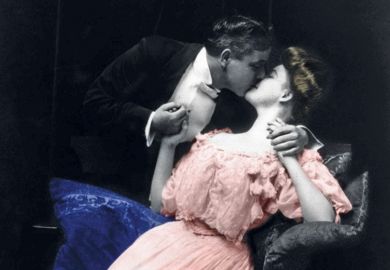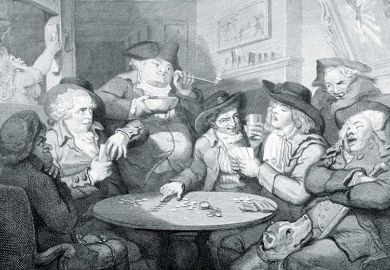Three internationally famous literary scholars have turned revolutionary generals with a book that everyone working as, or learning to be, a literary critic should read. Sit with me while I use the dinner table to explain their tactics.
Let’s clear the crockery to view the battlefield: Toril Moi, Rita Felski and Amanda Anderson engage the enemy over the idea of character. This is important because, while naive readers (civilians, you might say) think of literary characters as people they know, relate to, love or judge, once you’ve taken the Queen’s shilling as a professional critic, things change. You are ordered to think of characters as unreal, made up of ink on a page or light on a screen, not flesh and blood (characters are only, as they say in the ranks, “semiotic effects”). And this is why these generals are revolutionary: critics’ wars used to be between “traditionalists” and once-newfangled “theorists”, or between read-the-words-on-the-page “formalists” and what’s-the-context-and-politics “historicists”. Significantly, Moi, Felski and Anderson have drawn up new battle lines. Here, “ordinary readers” and their allies: I’ll use the salt and pepper, because, for the generals, the ordinariness returns non-scholarly savour to literary texts robbed of their flavour by academics. And there, “professional critics”, represented by these sharp knives – the word “criticism” has its origin in “cut”, after all.
Looming ominously over the whole combat zone, like that large empty soup tureen, is what the authors call the “decreased enrolments and plummeting prestige of literary studies”. Moi, Felski and Anderson aim to convince us that critics should talk about quite normal things such as “a character’s motivations or intentions” and “what goes on in a character’s head”. By advancing “ordinary” arguments, “building bridges to wider publics”, we will find that the soup tureen is not so empty after all. But these “new avenues of inquiry” need to clear away “old restrictions”. Attack!
Moi’s essay charges straight into the ranks of professional critics, assaulting the taboo that we must not think of fictional characters as real people. This taboo, she argues, belongs to the early years of English as a discipline in the Cambridge of the 1920s and 1930s, a subject creating itself in modern and modernist style. Here is that famous old warhorse, L. C. Knights’ 1933 essay “How many children had Lady Macbeth?” (His answer: it’s a silly question outdated buffers ask, because she’s not real.) Moi is sympathetic to Knight’s argument in its context (“I too would have revolted against the staid old gentlemen critics waxing sentimentally about the humanity of Shakespeare’s heroes”) and leads it to pasture. But she unsparingly puts to the sword contemporary critics for whom this view has become an inflexible doctrine. Literary studies today is dominated by a “two-headed troll: formalism and theory”, maintaining this imaginary and unnecessary taboo purely as a shibboleth to divide “professional” from “ordinary” readers. Professional critics claim to believe that an extraordinarily complex and magical process occurs in transmuting a book’s words into something like a person, but it’s just…ordinary. Once we see that and get over ourselves, we can escape the bewitchment of this language game and explore the fascinating things about characters that interest ordinary people. Snicker-snack with the sword, dead troll.
Felski’s essay broadens the offensive. Focusing on the way we unavoidably identify with characters (as when students or literary agents say “I found her relatable”), she offers ways to classify, rather than forbid, this everyday but powerful experience. She suggests four categories: identification happens through alignment (whose eyes are we seeing through?); allegiance (do we share their values?); recognition (are we like them in some way?); and empathy (do we share their feelings?). And can we, she wonders, identify ironically with characters? (We can!)
Anderson’s final essay mops up survivors by exploring “rumination”, the way that the novel creates space for the reader to understand a character worrying away at something (more visual forms find this a challenge: watching someone stare into space for ages doesn’t make great TV). Her wonderful, careful reading of Trollope draws this out. This pondering is important because it embodies how we take time to struggle with and give attention to moral matters.
Some dugouts of resistance to their onslaught: the book returns, as other recent accounts do, to a story about the origins of the subject in 1920s Cambridge. But, as Alexandra Lawrie showed in The Beginnings of University English: Extramural Study, 1885-1910 (2013), many of the ideas deep within literary studies grew in the adult education movement decades earlier. Moreover, as Gauri Viswanathan argued in the 1980s, the discipline’s shape is also influenced by its colonial past. Does this distort their account? Perhaps all disciplines need their origin myths, even if only to overcome them.
Another distortion lies in the absence of a discussion of teaching. Ben Knights’ Pedagogic Criticism: Reconfiguring University English Studies (2017) argued that ideas about the discipline are passed down in the “dialogues of the corridor and classroom as much as in the monograph or learned journal essay”. To focus only on the latter gives a skewed picture. In our day-to-day practice, if a student (wickedly!) expresses sympathy for Jane Eyre, we don’t expel them from the room for shocking taboo-busting: instead we begin with exactly that sympathy to develop our pedagogic conversation.
Finally, although major British-based critic Derek Attridge gets a cursory mention, this is a very American-focused book. In the UK, there have been parallels to these debates for years, in different forums; the British literary critical scene is dominated by historicist criticism, not trollish theory and formalism; and, even given that dominance, there’s usually a more relaxed relationship between context and form in British criticism. (But, like so many recent important books, this one is from the University of Chicago Press, and for a US audience, so maybe it’s wrong to cavil.)
My military metaphor is too much: swords should be ploughshares. Moi, Felski and Anderson are more like gardeners, cultivating the beds, rooting up the bindweed of false dogma and making our little lot – literary criticism – more appealing. The different critical virtues so strikingly exemplified in each essay (Moi’s attentive argument, Felski’s wide-ranging analysis, Anderson’s insightful readings), the absolutely lucid prose (rightly, a stylistic rebuke to professional argot and inaccessible theory-speak) and the clear-eyed overview of critical debates mean this book is perfect for present and future gardeners. It could and should be read by all critics and students.
A final thought. Moi, Felski and Anderson want us to speak with wider publics. Wonderful! At literary festivals and elsewhere, you can meet very many “ordinary” readers (though who is ordinary, really?) who want to hear great literary criticism about the books they love. But this book’s underlying question is actually “What should academic literary criticism be?” which, while important to me (and them, and probably some of you, dear THE readers), isn’t really a crowd-pleaser. “Reassessing” our critical “norms” is intellectually and pedagogically vital for the discipline, brilliantly done here, but it’s still the work of professional critics. Unintentionally, it warns the public to keep off the lawn. Public engagement, in our dry idiom, is very hard, as the UK’s long experience with the research excellence framework has taught us, and we need great models for it. So might Moi, Felski and Anderson be better off just doing what they say needs to be done?
Robert Eaglestone is professor of contemporary literature and thought at Royal Holloway, University of London and the author of Literature: Why It Matters (2019).
Character: Three Inquiries in Literary Studies
By Amanda Anderson, Rita Felski and Toril Moi
University of Chicago Press
176pp, £46.51 and £16.00
ISBN 9780226658520 and 9780226658667
Published 23 October 2019
The authors
Amanda Anderson is Andrew W. Mellon professor of humanities and English, and director of the Cogut Institute for the Humanities, at Brown University. An expert on 19th- and 20th-century literature and culture as well as wider issues of disciplinary formation and the relationship between literature, politics and ethics, she is the author of books including Tainted Souls and Painted Faces: The Rhetoric of Fallenness in Victorian Culture (1993), The Way We Argue Now: A Study in the Cultures of Theory (2006) and Psyche and Ethos: Moral Life after Psychology (2018), based on the 2015 Clarendon Lectures she delivered at the University of Oxford.
Rita Felski, William R. Kenan Jr professor of English at the University of Virginia, studied French and German at the University of Cambridge and went on to both an MA and a PhD at Monash University in Australia. She has described her “long-standing interests” as in “feminist theory, modernity and postmodernity, genre (especially tragedy), comparative literature and cultural studies”. Her books include The Gender of Modernity (1995), Literature after Feminism (2003), Uses of Literature (2008) and The Limits of Critique (2015). In 2016, she was awarded a Niels Bohr professorship by the Danish National Research Foundation to head a major research project on “the social dimensions of literature”.
Toril Moi, James B. Duke professor of literature and Romance studies at Duke University, was born in Norway, studied at the University of Bergen and wrote a major study of Henrik Ibsen and the Birth of Modernism: Art, Theater, Philosophy (2006). A leading authority on feminist theory and women’s writing, she is the author of Sexual/Textual Politics: Feminist Literary Theory (1985 and 2002), Simone de Beauvoir: The Making of an Intellectual Woman (1994 and 2008) and What Is a Woman? And Other Essays (1999). She also has a deep interest in the intersections between literature, philosophy and aesthetics, which she explored in Revolution of the Ordinary: Literary Studies after Wittgenstein, Austin, and Cavell (2017).
Matthew Reisz
POSTSCRIPT:
Print headline: Let’s have Jane Eyre to dinner
Register to continue
Why register?
- Registration is free and only takes a moment
- Once registered, you can read 3 articles a month
- Sign up for our newsletter
Subscribe
Or subscribe for unlimited access to:
- Unlimited access to news, views, insights & reviews
- Digital editions
- Digital access to THE’s university and college rankings analysis
Already registered or a current subscriber?








